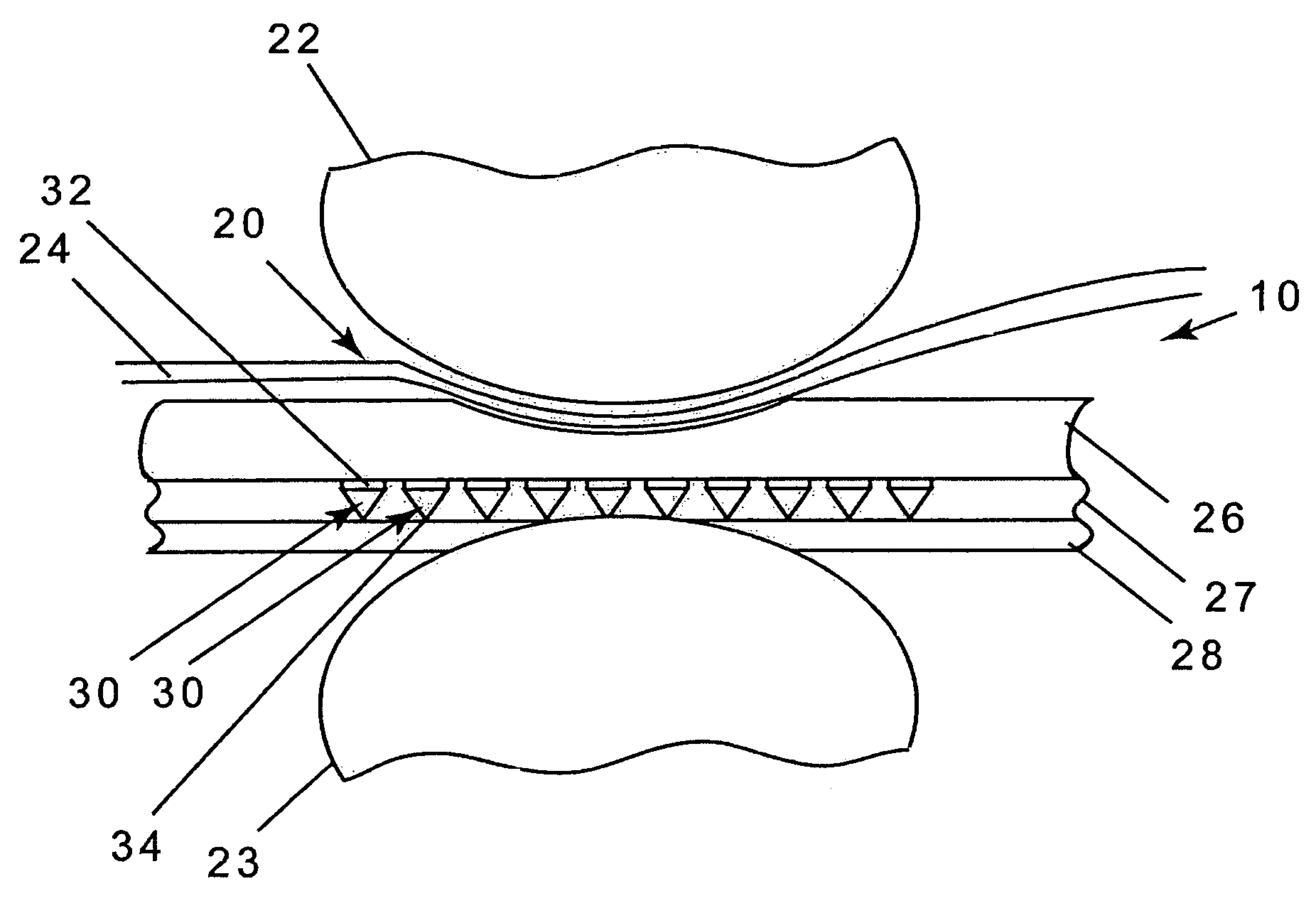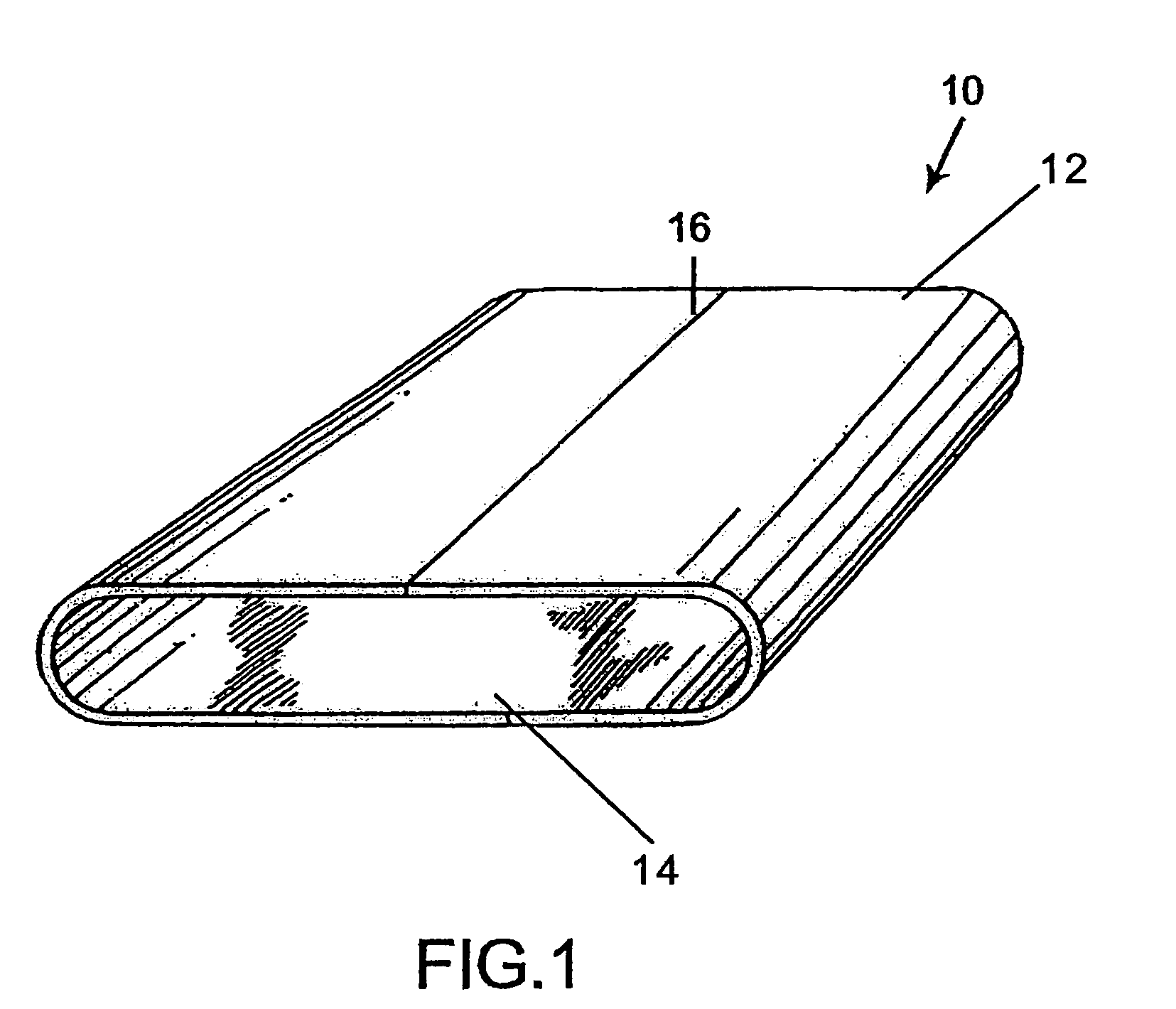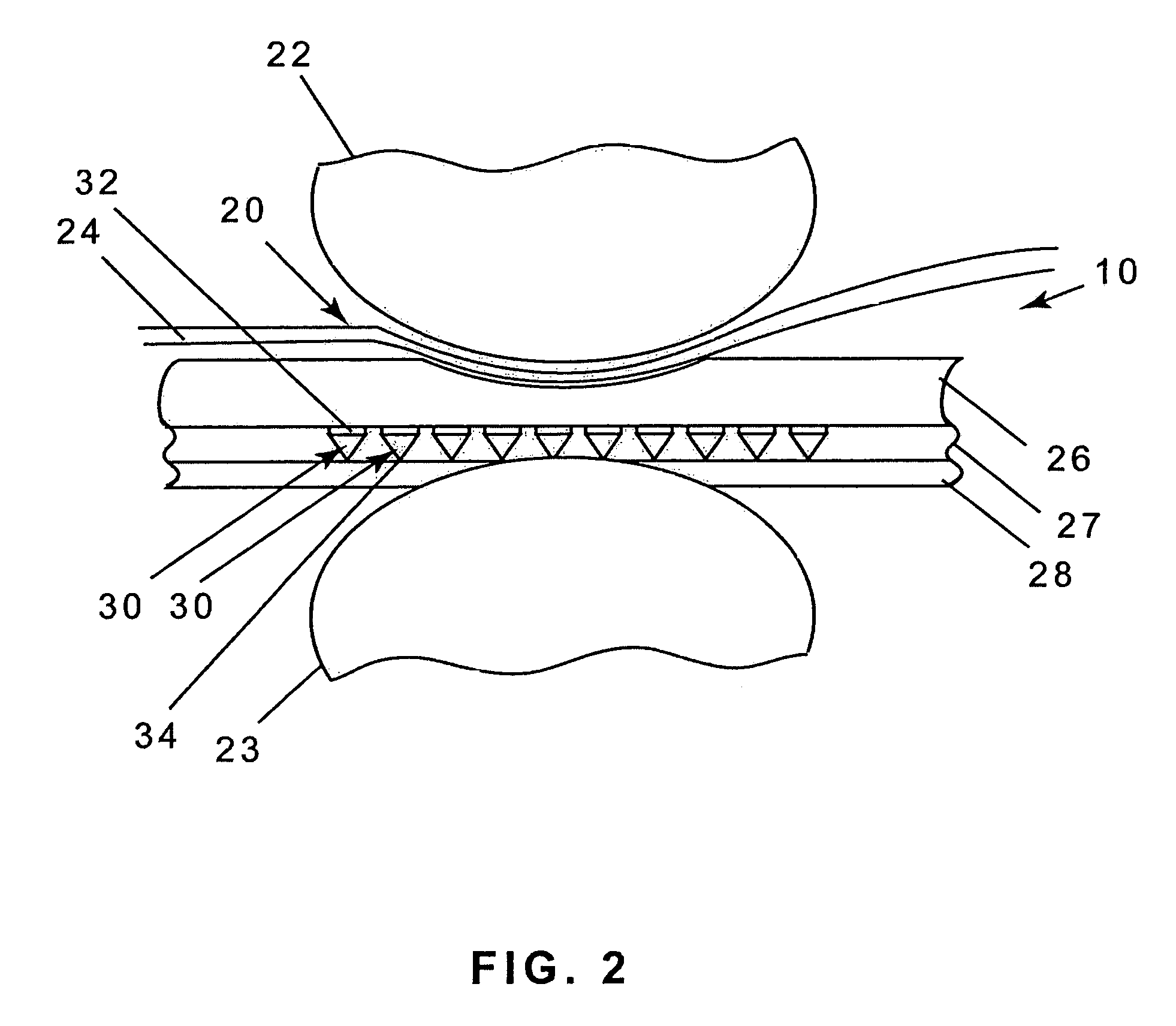Anti-rewet press fabric
a press fabric and fabric technology, applied in the field of anti-rewetting press fabric, can solve the problems of low paper dry content, high rewetting, and decrease in the contact face of the press fabric against the sh
- Summary
- Abstract
- Description
- Claims
- Application Information
AI Technical Summary
Benefits of technology
Problems solved by technology
Method used
Image
Examples
Embodiment Construction
[0040]With reference now to FIG. 1 there is generally shown a press fabric 10 having an inner surface 14 and an outer surface 12. The press fabric 10 shown is an on-machine-seamable type having a seam area 16 which may include a seaming mechanism of the type suitable for the purpose which are well known in the papermaking industry. Of course, the press fabric may also be of the type which is woven endless or spiral formed.
[0041]With reference to FIG. 2, the press nip 20 comprises a top press roll 22 and a bottom press roll 23. The bottom press roll 23 is preferably formed with cavities in the form of suction holes with vacuum, lengthwise extending grooves or blind-drilled holes. A paper web 24 and the press fabric 10 are carried through the press nip 20.
[0042]In its most general form, shown in FIG. 2, the press fabric 10 includes a first, or surface layer 26, attached to a second, or barrier layer 27, and a base support 28 which may be an endless woven base. The surface layer 26 con...
PUM
| Property | Measurement | Unit |
|---|---|---|
| flow resistance | aaaaa | aaaaa |
| thickness | aaaaa | aaaaa |
| distance | aaaaa | aaaaa |
Abstract
Description
Claims
Application Information
 Login to View More
Login to View More - R&D
- Intellectual Property
- Life Sciences
- Materials
- Tech Scout
- Unparalleled Data Quality
- Higher Quality Content
- 60% Fewer Hallucinations
Browse by: Latest US Patents, China's latest patents, Technical Efficacy Thesaurus, Application Domain, Technology Topic, Popular Technical Reports.
© 2025 PatSnap. All rights reserved.Legal|Privacy policy|Modern Slavery Act Transparency Statement|Sitemap|About US| Contact US: help@patsnap.com



